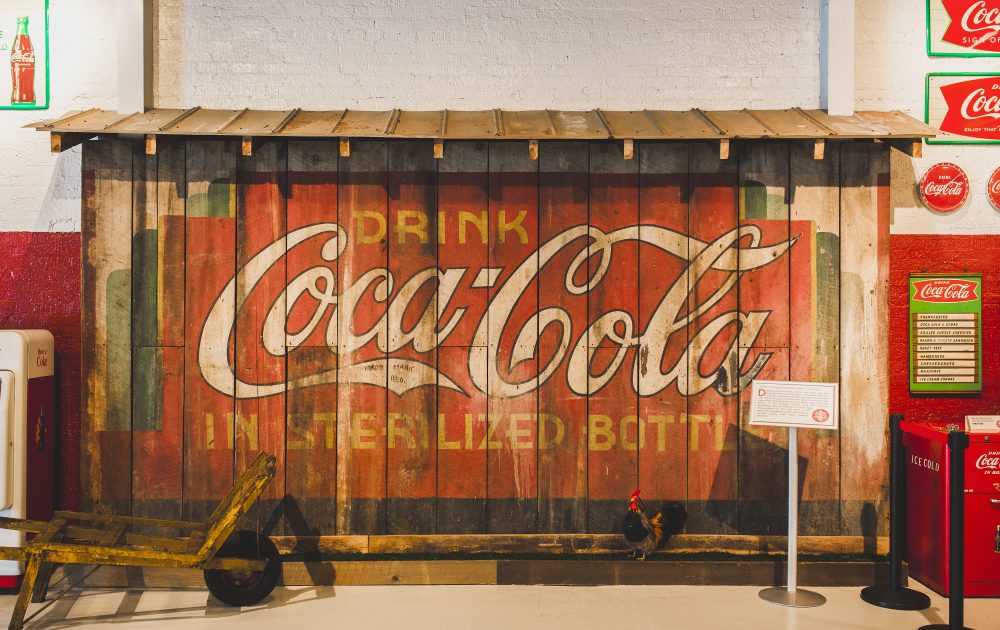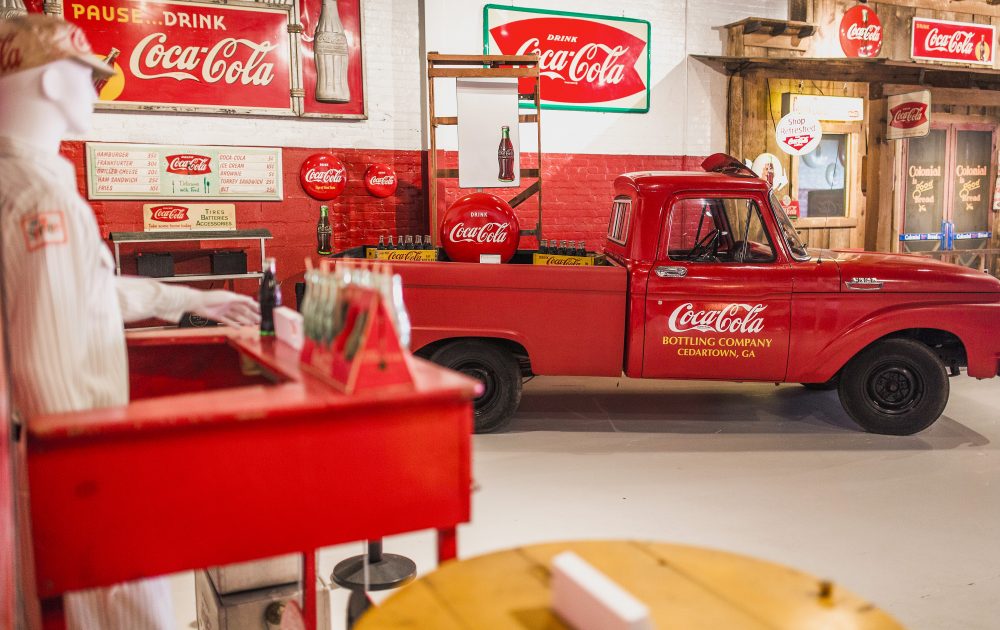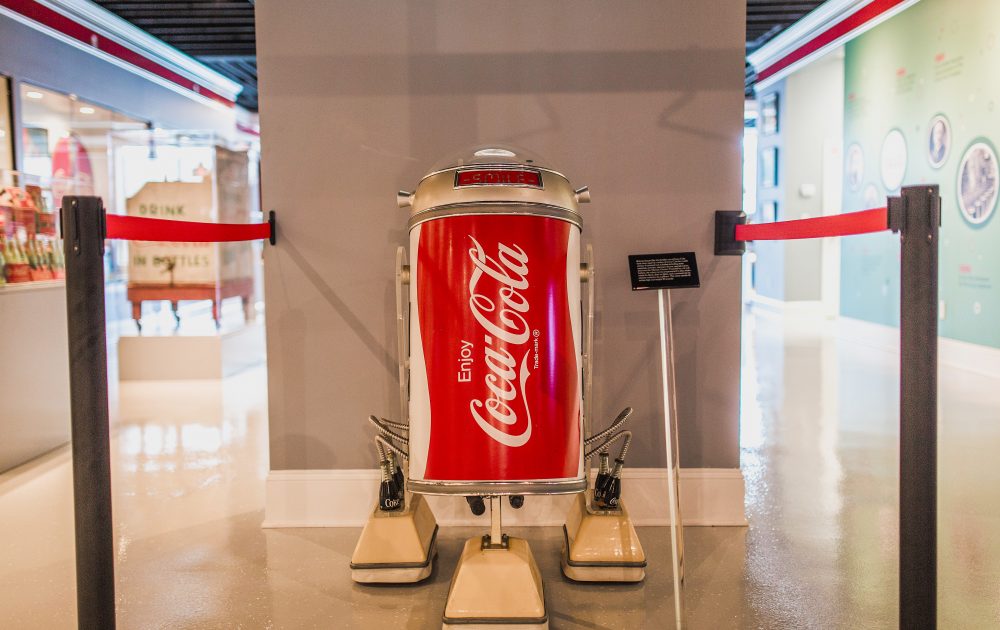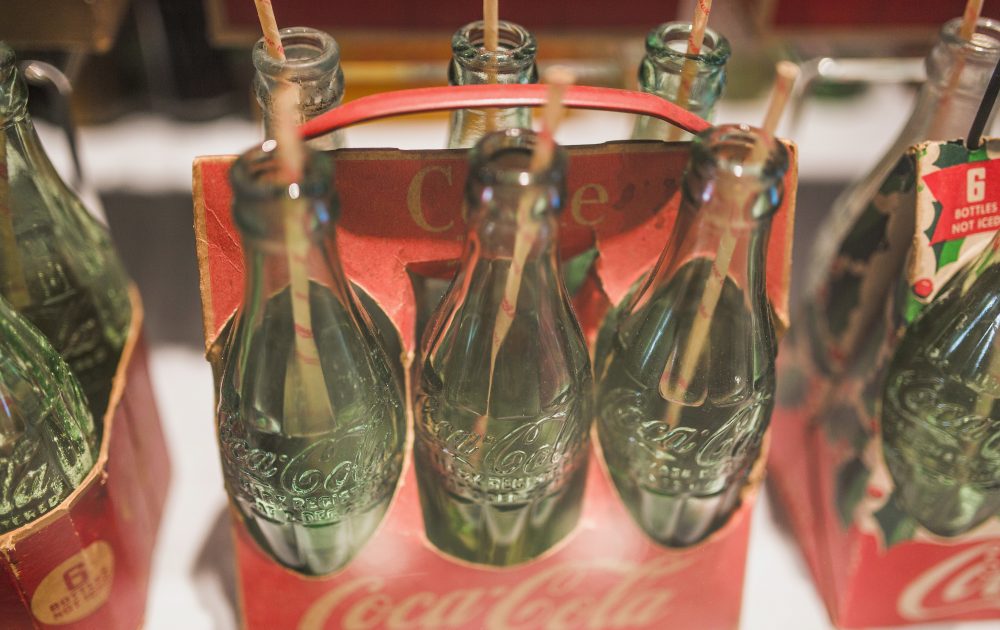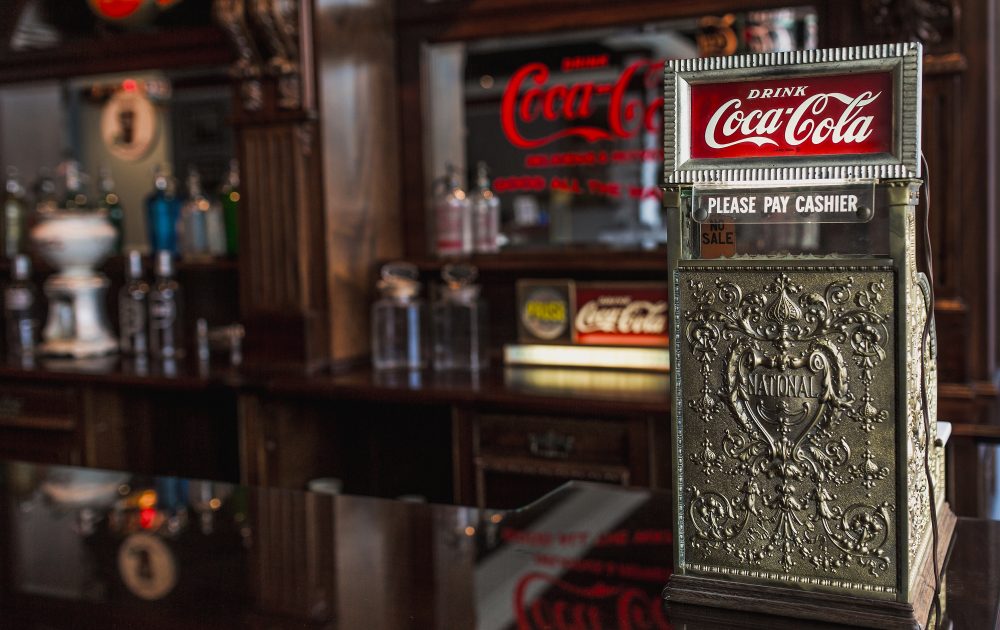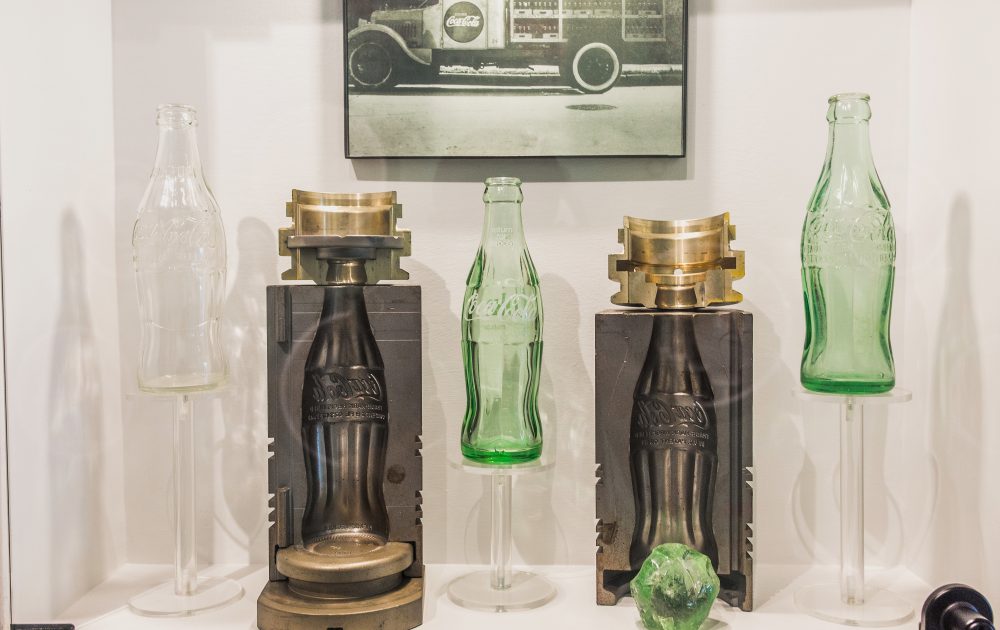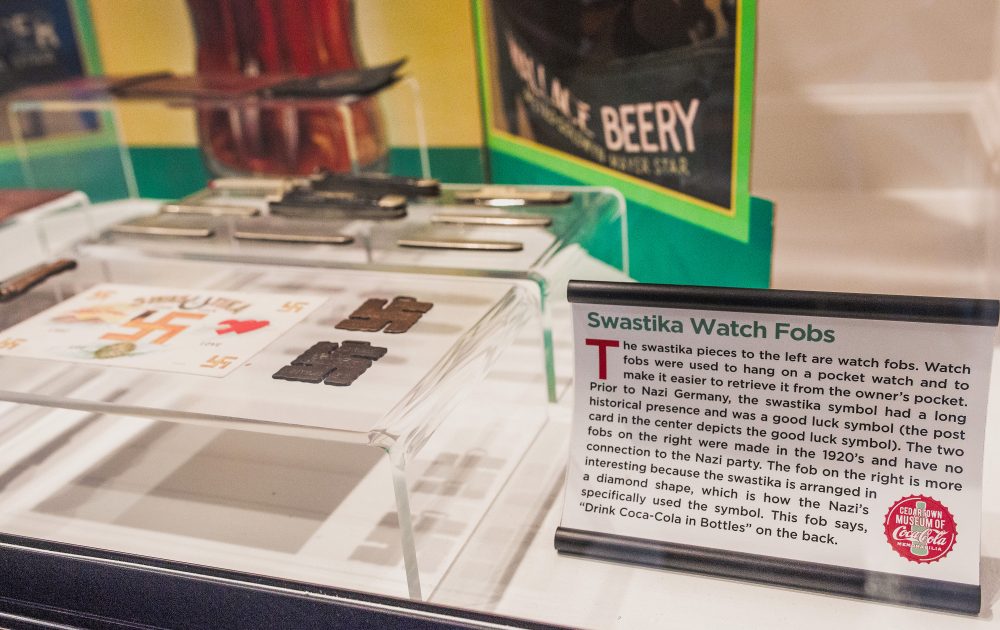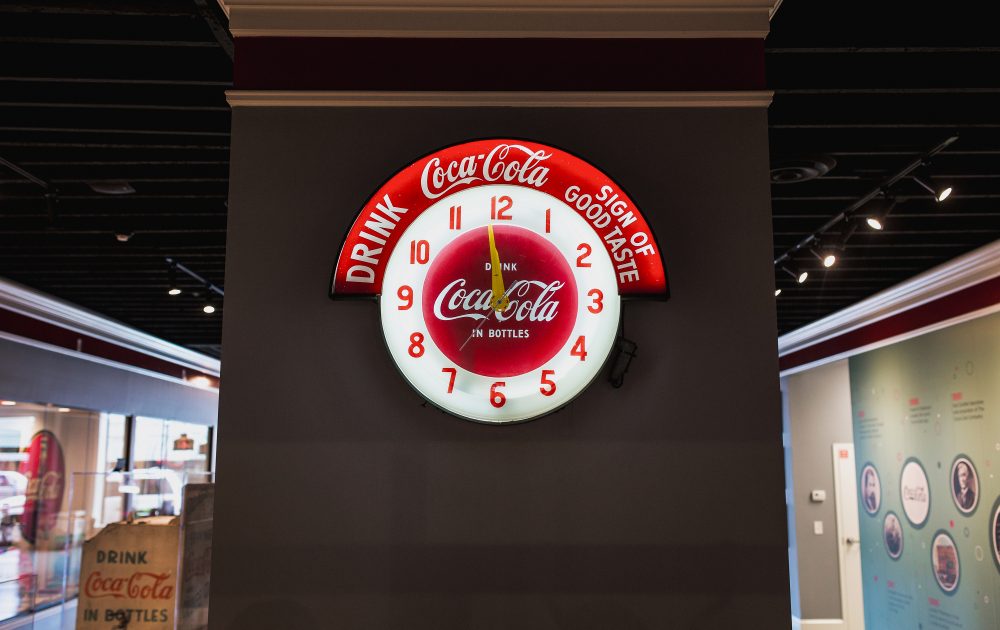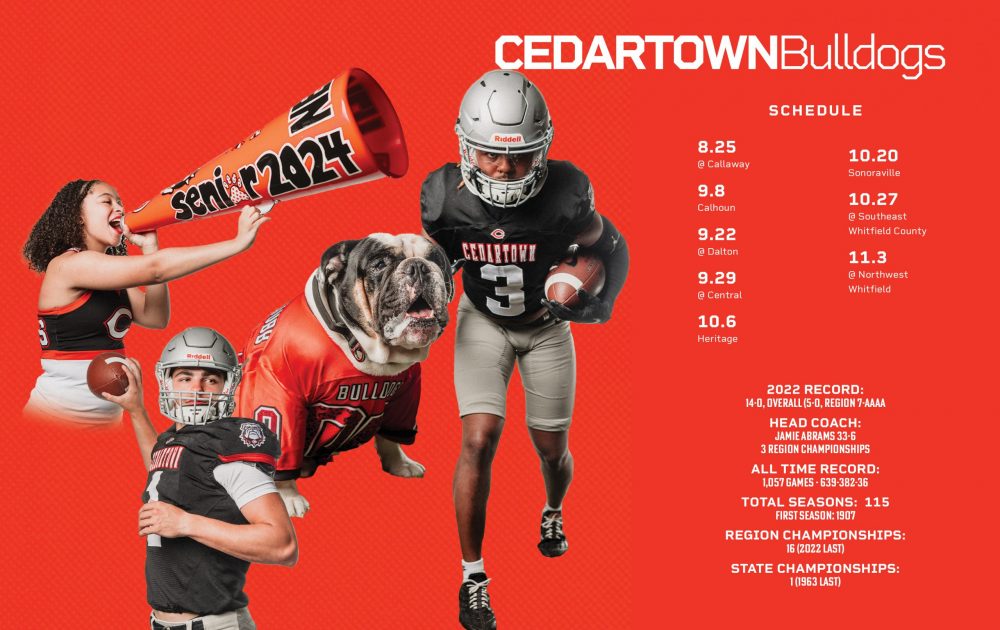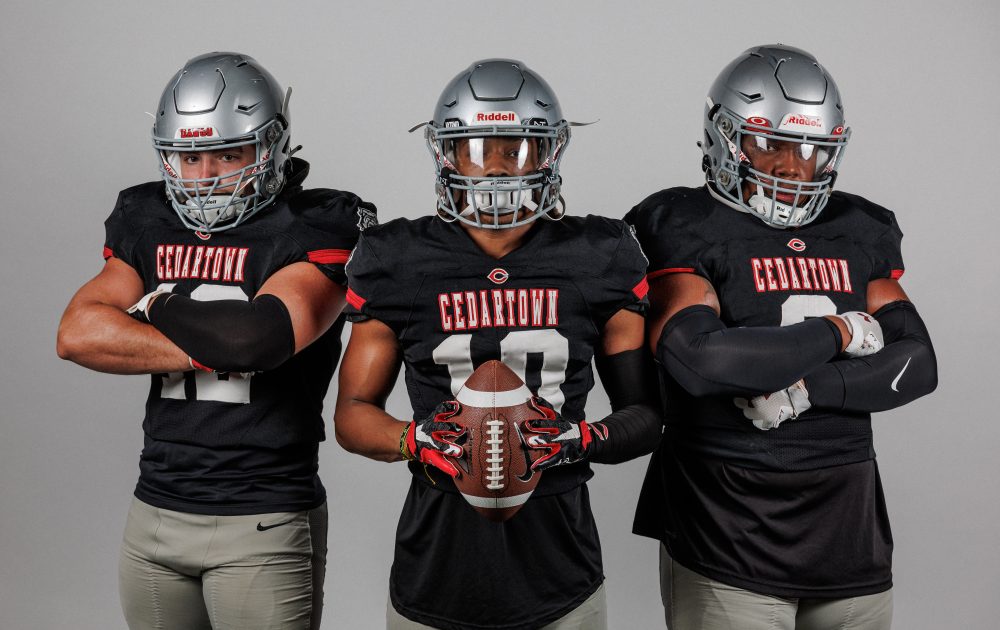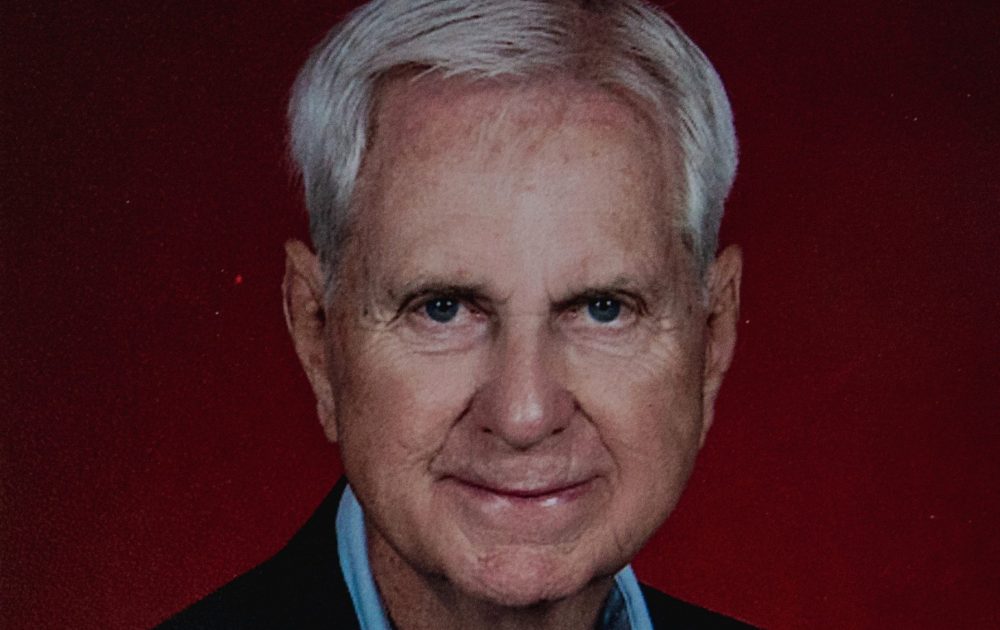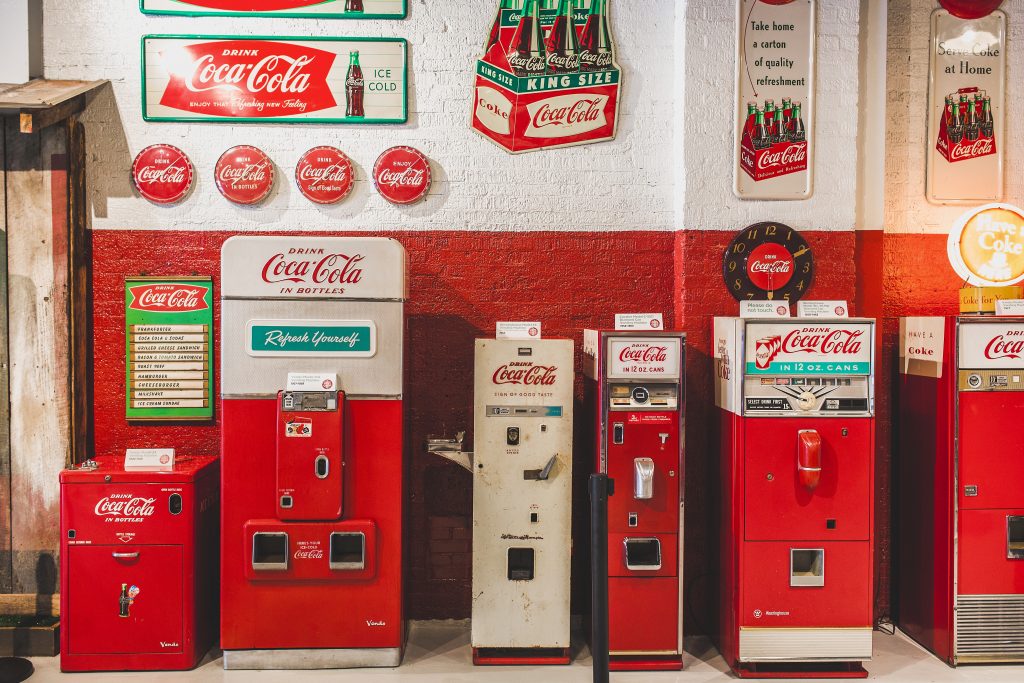
Photography Cameron Flaisch
Approaching 209 Main Street in Cedartown, Ga., one cannot help but notice, carefully carved into the stone archway entrance of an old brick building, the Spenserian-style script “Coca-Cola” logo. Entering what was once the Cedartown Bottling Plant, it is hard to imagine how it must have looked long ago, when heavy machinery roared and workers bustled about to bottle the secret recipe of Coca-Cola. Now, visitors come here to catch a small glimpse of Coca-Cola’s history, marking the significance of one of the world’s most recognizable brands.
Last June, the doors of the new Cedartown Museum of Coca-Cola Memorabilia opened its doors, welcoming eager spectators to observe some of the rarest pieces of Coca-Cola memorabilia on public display. The building had been vacant since the bottling company closed in the 1970s; however, once the Morris family purchased it at auction, it became clear to Cedartown locals that the landmark had not seen its final days.
“It’s been a big project – two-and-a-half years’ worth to be exact,” says Jamie Morris, owner of the property.
After a complete renovation, the building now fashions a modernized interior that highlights its more-than-century-old past. The museum seeks to share a comprehensive story of the very beginnings of the Coca-Cola Co. up until its late-1970s departure from Cedartown’s Main Street. This is done through the organization of displays, with guests taking a journey through the early to late eras of Coca-Cola advertisements, products and other memorabilia.
But how does a ramshackled Coca-Cola bottling factory dating back to the 1920s become a newly renovated memorabilia Mecca among collectors and enthusiasts alike? Enter Daniel Morris, a 19-year-old entrepreneur, whose love of history and passion for collecting led his family to invest in what is now the Cedartown Coke Museum. Morris, a freshman at Washington and Lee University, has been collecting Coca-Cola memorabilia since he was 7.
Daniel remembers how it all started. “History is, by far, my most favorite subject to learn academically, and the fact that there was plenty of material to learn was very appealing to me,” he says. “Besides that fact, I credit my grandmother for gaining my interest in collecting Coca-Cola memorabilia. She used to take me to an old diner in downtown Cedartown where they actually sold little Coca-Cola trinkets.”
Daniel’s grandmother, Mildred Oxenreider, is still cheering him on today, though he is far past buying diner knock-offs. The young curator quickly learned that the money is in the history, which led his collector’s eye to search out much older pieces. The business of antiquing or “picking,” as it is commonly referred, is an industry not suited for the bystander. In fact, collecting Coca-Cola memorabilia has led Daniel to drive countless miles across the United States in search of the next great buy.
“You can’t make good purchases by sitting at home on eBay; you have to go out and find the stuff. I’ve been all around the country to buy, and I drive. I’ve driven as far west as Arizona and as far north as Indiana,” he explains. “Buying Coca-Cola memorabilia is just like buying anything else. Whereas at one point I was buying Coke bottles that would sell for $2, today we are buying Coke bottles that range between $2,000 and $3,000, and it’s a totally new realm of collecting.”
Aside from hobby collectors and Coca-Cola brand enthusiasts, there lies a special community of antique enthusiasts that pick at a substantially higher level than the rest. These antiquers have made what is commonly considered a hobby into a lucrative trade, each specializing in different areas of picking. According to Daniel, “It’s all about who you know.” With only five years of experience as an expert collector under his belt, he has grown his network of seasoned pickers to span across the country.
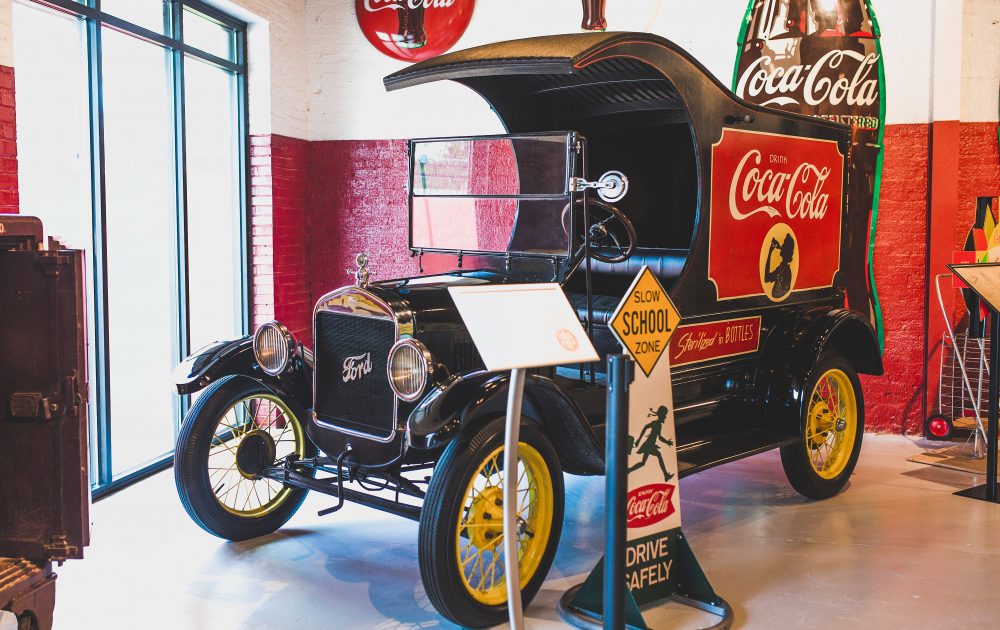
“There are people who buy and sell antique advertising, predominantly Coke, but really any type of soda advertising, full time. All they do is travel around the country and go to different shows,” explains Daniel. “A lot of my best contacts are those people that travel every day, every week of the year, because they are always the ones on the front lines that find the good buys.”
The rarest Coca-Cola antique displayed at the museum, an early model soda vending machine sitting in one of the center aisles, was acquired thanks to Daniel’s network of collectors. This piece, he says, exemplifies what truly sets the Cedartown Coca-Cola Museum apart from places like the World of Coke. It is the earliest known, coin-operating vending machine in existence. Verified by representatives of the Coca-Cola Company Archives, this piece is as rare as it is coveted by Coca-Cola collectors worldwide.
The museum features antique memorabilia dating as early as the 1870s and as late as the 1970s. Among the many unique pieces, the museum features two antique automobiles; a Coca-Cola advertisement painted along the side of a massive barn wall; and a replica of an old-fashioned store front, featuring original screen doors and Coca-Cola porcelain signage.
“It is really unbelievable, finding some of the rare items we have,” says the elder Morris as he looks over at a series of bottles worth a small fortune. “What we have heard from collectors and from representatives from the World of Coke that have visited here is that a lot of the stuff we have is not on display anywhere else.”
One of the more interesting pieces found in the museum, which seeks to please all audiences, is the Coca-Cola Robot, which was used as a promotional tool for the 1996 Summer Olympic Games in Atlanta. This remote-controlled robot, standing roughly 4 feet tall, closely resembles what one might get by crossing R2-D2 with a Coca-Cola can; this ultimately led to a lawsuit against the company.
After a full rotation through the articulately organized displays of memorabilia, the tour ends at an old-fashioned soda fountain bar. As the glow of the hanging lamps reflects off of the thin layer of glass resting on the bar’s finish, it is hard not to imagine a young boy or girl resting there after ordering an ice-cold Coca-Cola.
Here at the Cedartown Museum of Coca-Cola Memorabilia, the Morris family proves that a bottle of Coke is more than a refreshing drink; it is a time capsule. The Coca-Cola Co. stands as a wonderful story of how one company, with a simple mission of “refreshing the world in mind, body and spirit,” has made a global impact – telling stories of every era it has been part of since its founding in the late 1800s. The Morris family is proud to have this opportunity to share the stories that exist within each unique piece of Coca-Cola history.

